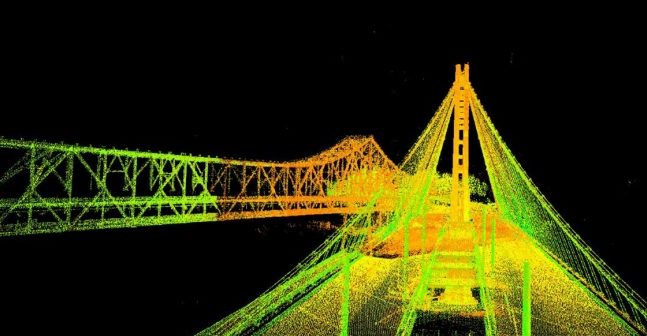2016 was a great year for advancements in the terrestrial laser scanning space where Leica Geosystems delivered some amazing features across hardware and software solutions which truly elevated our customer offering and helped open new markets.
 The P-series, in particular the P30 and P40, now have even greater survey-focused functionality which allows them to be seamlessly integrated into highly demanding sites across a variety of segments. By the end of Q1 we will introduce more exciting new features such as ‘wake-up sessions’ and the ability to control multiple scanners from one PC, both useful tools for remote monitoring applications.
The P-series, in particular the P30 and P40, now have even greater survey-focused functionality which allows them to be seamlessly integrated into highly demanding sites across a variety of segments. By the end of Q1 we will introduce more exciting new features such as ‘wake-up sessions’ and the ability to control multiple scanners from one PC, both useful tools for remote monitoring applications.
There are now many tools which other manufacturers have not yet addressed such as:
- Automatic calibration of the real-time dual axis compensator before the first scan
- Atmospheric and geometric PPM corrections
- New traverse application (which was extended and refined throughout the various releases)
 In April at SPAR we announced three major new software advancements to the ScanStation P-Series scanners offering amazing tools for our new customers and those with maintenance contracts on existing products:
In April at SPAR we announced three major new software advancements to the ScanStation P-Series scanners offering amazing tools for our new customers and those with maintenance contracts on existing products:
1.Cyclone Cloud: a new cloud-paging software subscription tool which is scalable, secure and eliminates IT headaches. Still in the roll-out and field-testing phase, 2017 should see a full release of Cyclone Cloud to end users. It is hoped that we can help new customers, and customers with hardware from other vendors with this solution.
2. Pegasus project import: an advancement to make easier for HDS customers who own our Pegasus mobile mapping solutions to bring their data into Cyclone and begin using our best in class tools to extract lines, sections and meshes.
3. Batch image support: a Cyclone new feature that allows users to handle images from a variety of 360 panoramic imaging solutions much faster and the data from them can be burnt automatically onto the point cloud with limited user interaction saving customers time and money.
In October at Intergeo, we announced yet more development across the Cyclone, Cloudworx, JetStream product families:
4. New Smart-Align tools: improvements added in Cyclone Register, which built on the features of Auto-Align and Visual Alignment added in Cyclone 9.0. Customer feedback regarding Smart Align has been fantastic offering up to 40% productivity gains at the registration stage of a project. See HDS playlist for an overview of all these new features in one handy location:
5. VR with JetStream VR and TruView Global (TVG) VR: The former is a fully navigable point-cloud based solution used in conjunction with Facebook’s Oculus Rift headset with navigation provided by a 3D mouse. TVG VR is based on the Samsung Gear VR headset (and easily portable to other solutions).
See the live feed we recorded of JetStream VR in action at the Italian HDS user event in November.
Customers can collaborate with other users in the same shared space, taking notes, measurements and making mark-ups for dissemination. We plan to market these solutions officially in 2017 and we have had a very positive response from our customers to these solutions.
David Langley discusses some of these VR-specific applications, and other features announced at Intergeo:
6. JetStream Disconnected: An addition that allows our JetStream data files to be shared to a user without a direct connection to the original network location. We also can run these files directly from a USB stick with instant loading and no loss in performance. The solution has been critically acclaimed by those using it.
Users are now able to share more easily their large point cloud files with colleagues and customers. Movie creation in also now included in the JetStream Viewer application, which means users can create and share videos of their work with a few clicks. Check out how it works on the video below:
7. The ability to read Autodesk *.rcp (Recap) files in Cloudworx for Autocad: this means users can take full advantage of the tools within our class-leading point-cloud tools but have the flexibility to user *.rcp files if that is what has been provided, without the need to convert to our own proprietary formats.
All things considered 2016 was a great year for 3D solutions from Leica Geosystems.
This post was featured initially on Paul Burrow’s Linkedin. To keep up to date with Paul Burrows latest blogs and HDS news, follow the Laser Scanning from Leica Geosystems LinkedIn showcase page by clicking here.

Paul Burrows, Leica Geosystems EMEA business manager for HDS














